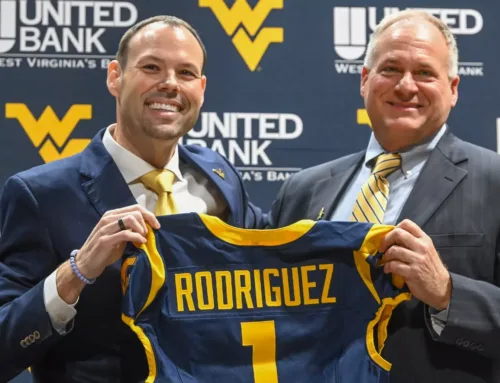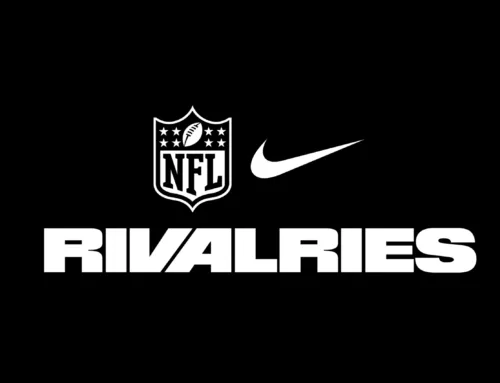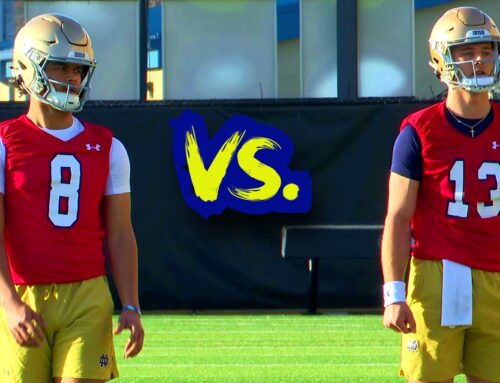One of the off-season ideas I’ve been kicking around is creating a salary cap for college football. I’m not coming at this from a “pay the players” megaphone but rather to create a NFL-type of system to see how it could work in the future and what positives and negatives would happen at the college level.
I decided to create a salary cap of $2 million. I arrived on that number based on rough estimates of major college football program’s revenue and a sketch of how much each player would make on average that to me seems more fair.
Wait, Can Schools Afford to Pay Players?
That depends. If we’re just looking strictly at financial numbers–and not Title IX or tax issues–the wealthiest 30 football programs would have no problem with a $2 million salary cap. The next 20 wealthiest could probably get by just fine with some adjustments to their budgets while it may be tougher for the rest of the schools. However, plenty of football programs lose money while most athletic departments lose money–and yet the amount of D-1 football programs continues to increase.
Maybe one of the best intended consequences of a salary cap is that it would shrink major college football down to fewer than 70 programs? It’s always felt like we’re headed down a road to a major split like that with the increased pressure to share more football revenue. At the very least maybe a salary cap forces programs to cut back on the exorbitant building spending in favor of more money directly to players.
Anyway, for Notre Dame a salary cap of $2 million shouldn’t be an issue in the slightest. Remember, the school is currently “paying” the football players upwards of $6 million annually in the form of tuition, room & board, and cost of living for the pleasure to attend the university.
So, a salary cap of $2 million is basically increasing employee costs by 33% from a football program that (extrapolating from the most recent Forbes estimates) is generating near $90 million in revenue and nearly $60 million in profit annually.
My Methodology
Even though it’s not an apples to apples comparison I had to start somewhere and that was with a rookie wage scale for the freshmen. Instead of getting paid by where you’re drafted in college you’re paid by your final Composite recruiting rankings.
Players outside the Top 800 are making the minimum of $5,000, Top 700 players make $5,250, Top 600 players make $5,500 and so on and so forth until Top 50 players make $15,000. Having the top freshmen make 3 times as much money as the lower ranked freshmen doesn’t seem so bad when you consider in the NFL that difference is roughly 8 to 1 in rookie salaries.
This salary cap system gives out 1-year contracts with the exception of redshirt freshmen who I kept on their ‘rookie’ deals, more on this below.
Here’s the salary structure for Notre Dame’s 2017 roster for 85 scholarships:
| PLAYER | SALARY |
|---|---|
| Shannon | $5,000 |
| MacCollister | $5,000 |
| D. White | $5,000 |
| Wardlow | $5,000 |
| Doerer | $5,000 |
| McIntosh | $5,250 |
| Ogundeji | $5,500 |
| Book | $6,000 |
| Hinish | $6,000 |
| Genmark Heath | $6,000 |
| Jo. Jones | $6,500 |
| D.J. Morgan | $6,500 |
| Owusu-Koramoah | $6,500 |
| Armstrong | $6,500 |
| Tagovailoa-Amosa | $6,500 |
| Young | $6,500 |
| Okwara | $7,000 |
| T. Jones | $7,000 |
| Boudreaux | $7,000 |
| Gibbons | $7,000 |
| Holmes | $8,000 |
| Robertson | $8,000 |
| D. Adams | $8,000 |
| Davis | $8,000 |
| Banks | $10,000 |
| Lugg | $10,000 |
| Ewell | $10,000 |
| Eichenberg | $12,000 |
| Wright | $12,000 |
| Hainsey | $12,000 |
| Kmet | $12,000 |
| Jam. Jones | $12,000 |
| Kraemer | $15,000 |
| Kareem | $15,000 |
| McKinley | $18,000 |
| Barajas | $18,000 |
| Tiassum | $18,000 |
| A. White | $18,000 |
| Pride | $19,000 |
| Ruhland | $19,000 |
| Luatua | $19,000 |
| Claypool | $20,000 |
| Dew-Treadway | $20,000 |
| Byrne | $20,000 |
| Mokwuah | $20,000 |
| Canteen | $20,000 |
| Fertitta | $21,000 |
| Elliott | $22,000 |
| Boykin | $22,000 |
| Vaughn | $23,000 |
| Finke | $24,000 |
| Coleman | $26,000 |
| Taylor | $26,000 |
| Hoge | $27,000 |
| Love | $28,000 |
| Studstill | $28,000 |
| Yoon | $30,000 |
| J. Hayes | $30,000 |
| Newsome | $30,000 |
| D. Williams | $31,000 |
| D. Hayes | $32,000 |
| Bilal | $32,000 |
| Bivin | $32,000 |
| Bonner | $32,000 |
| Weishar | $33,000 |
| Sanders | $34,000 |
| Stepherson | $35,000 |
| Crawford | $35,000 |
| Watkins | $36,000 |
| A. Jones | $37,000 |
| Coney | $38,000 |
| Martini | $39,000 |
| Smythe | $39,000 |
| Tranquill | $40,000 |
| Trumbetti | $40,000 |
| Cage | $41,000 |
| Tillery | $42,000 |
| Bars | $55,000 |
| J. Adams | $56,000 |
| Mustipher | $58,000 |
| Wimbush | $61,000 |
| St. Brown | $65,000 |
| N. Morgan | $65,000 |
| Nelson | $72,000 |
| McGlinchey | $80,000 |
| Total | $1,999,750 |
Why This Won’t Work (Or How Alabama Will Abuse the System)
*If redshirt freshmen remain on their rookie deals then that will incentive team’s to sit as many freshmen as possible. It would make the implementation of the very first year of the salary cap really interesting to watch. You can imagine Alabama trying like hell to redshirt their entire freshmen class in order to drive down their salaries for the following season. Maybe you could pay the redshirts a set amount extra for their second season on campus or is it fair to keep their salary the same since they may be able to earn money for 5 years? What do you do for someone who is redshirt as an upperclassman due to injury, freeze their salary? This is something that should probably change as it doesn’t seem fair that Jamir Jones is making an extra $5,000 over Tony Jones when the latter player figures to be an impact member of this fall’s team.
*In my little salary cap universe I basically handed out veteran increases for everyone. There wasn’t any strict financial system that I followed (that would take way too long) although I’m sure it’d be a good idea for something like that to be created. For example, I was particularly harsh on Barajas as I review the numbers but he’s still earning $8,000 more than his freshman season despite never playing for the Irish yet. In the CFB salary cap world should players like this barely earn more money if they don’t make an impact on the field? Or should they be making $20,000+ a year for basically being a practice body?
*What else would Alabama do? Well, with money on the line even more non-contributors are bound to get ‘cut’ so to speak. Those types of shenanigans would likely greatly increase as they try to create more room for incoming freshmen. For example, with my current salaries above Notre Dame has $245,750 tied up in 32 freshmen and redshirt freshmen–or 12.2% of the cap on 37.6% of the roster. Alabama would have $189,000 tied up in just their top 14 recruits for the 2017 class. You can imagine what the rest of their roster looks like. I have no doubt they’d be looking to cut $200,000 to $300,000 of “dead weight” every year.
*So we’d undoubtedly have many more transfers in this system but would it be a bad thing? For competitive balance it might be better. Some of the blue-chip teams might not be able to sign that elite recruit and the player could fall to somewhere like Oklahoma State or Arizona. In the grand scheme we might see a great flattening out of the recruiting rankings as better talent falls to programs with more cap space.
*And some teams should have massive cap space. Let’s take Cal’s 2017 recruiting class for example, all that is tied up for them is a measly $76,750 total. That begs the question if we’d need a ceiling for salaries and/or rules for how much a player can be paid. For example, could a school like Cal pay their 5th best linebacker $60,000 because he’s a senior and they have to spend money to the cap ceiling? Do we need to establish a cap floor? Could the system be set up where Scott Pagano could be weighing a $85,000 salary from Cal, or even a $90,000 salary from Bowling Green when a school like Oregon only has room for $30,000?
*How much of a true market could be created in college football? That’s the one thing that would seem so difficult with an organization with 7 times more players than the NFL and a historical culture that is the exact opposite of parity. Would multi-year deals make life easier? How do you treat someone like Brandon Wimbush? He’s a big-time recruit, hasn’t played much at all, but is ascending to the starting quarterback role. Does he essentially sign a new free agent type of contract for $61,000 even though he doesn’t change teams?
What other positive and negatives do you see from a college football salary cap? How would you change things?





Interesting proposal. I’d like to see you try this next with absolutely no scale whatsoever but still a cap. So somebody like Shannon might literally get $0, while McGlinchey cracks the $100,000 scale.
It would be interesting to see how schools would try to weight what they pay each player. Would ND have offered Spencer Perry an extra $10,000 to keep him from transferring? If so, would you cut that money from starters or other backups?
I think if the NCAA every goes to a player compensation system, they’ll start with letting players profit off their own likenesses, then letting boosters pay players, then giving them a cut of any jersey sales (i.e. you get a cut of any sale of your jersey number during your 4 years there), and then finally actually paying them cash. At that point, I’m not sure if they would have a cap or not, but I would have to think you would already have split off the top 60 or so teams from the smaller schools who just couldn’t keep up with the booster money.
It was kind of fun trying to find a balance with the salaries. My first go-through I came up $600,000 short of the cap!
I had the rookies making a little less (not a big deal with $2 million) and actually had the top 5 earners all over $100,000 apiece. But, the big glut of middle earners I had to jack up considerably.
I think in reality you’d end up with 6-8 starters at each school making 75% of the pot.
The moneyball aspect of a college salary cap would be a fascinating study.
There would need to be a minimum salary. I’m sure the “union” or players’ association would insist upon it.
Ok starting this with the acknowledgement that even in the hypothetical world of paying NCAA players money (a bridge too far to imagine for some) this idea is even more impractical and impossible to actually implement. Because, to a degree (though on a much smaller scale of actual dollars), it would mean the college players would have a much stronger position and agreement than their current NFLPA union brothers.
The league I follow the closest, the NHL, if a team signs a player for his 35+ years (say signing a 36 year old for 3 years), that contract counts against the salary cap even if the player retires 2 years in. Now, there are loopholes to vanish that money where rich teams can get poorer teams to take their empty contracts (which they don’t actually have to pay, since player isn’t playing) or use a long-term injury reverse to exceed, blah blah blah you get the picture.
Anyways, how about to prevent the Alabama’s you basically enforce a minimum on players for a 4 year term. Maybe there’s a downside guarantee so that you sign a kid on national signing day, at minimum you have to pay him a certain % of his first amount. So the Irish sign, say Brock Wright for $12,000 but the actual scholarship/agreement isn’t a one-year, renewable thing, it actually guarantees him $12k this year, $6k the following three seasons at minimum, still subject to the up-side guarantee of the salary advancing normally as detailed in the article above.
That way a program can’t totally ditch the kid, even if they do that “dead space” of $6k for 3 more years still sticks with Notre Dame. My idea would be if the kid wants to transfer, he does so with his contract in hand so that transfers with him. I guess that’s probably how they get out of it, forcing players out of the program, which sounds wild but they have Top 100 players who want to sign there even if they’re (somehow) not offered a scholarship so it’s already pretty wild.
I would think there’s risk that injuries or busts could set a program back, so I’m not quite sure how feasible this idea really is. And, either way, I mean NFL players don’t have guaranteed money so I’m sure there’s no chance in hell the college powers-that-be sign off on giving players that concession, but it was something I thought of.
These are all great questions.
Another issue is what do you do with medicals who have to retire? As we know that can be abused too. Either way, dead money on the cap sounds like a good idea, if really hard to institute in the college game.
A very interesting proposal, but it gets very unworkable quickly. Besides some of the examples below, what do you do with a Justin Yoon. He is a 2* (maybe he was three, but the new kicker is a 2*), but a starter. What do you do with a kid who comes in as a 4*, but never sees the field -injury or just overrated, and a 3* who becomes an All-American. You are also setting compensation based on an evaluation system that the school has not created.
Just to pick on one example below, Shannon plays and is certainly worth more than $0. Is Mokwuah? His value has probably declined since his freshman contract. Also, as someone points out, what do you do about a Wimbush. He has no real leverage to demand more money, other than transfer. Do we really want to create that type of system? It is only a matter of time before someone suggests making the leverage even and allow free transfers. Even the NFL keeps some players on multi-year deals.
I would think the better approach is give them a $$ amount for the incoming freshman and let them allocate it. Eventually, it would be impossible for Alabama to sign all the 5* players because they will run out of money. That is not a bad result. Particularly if you kept the scholarship limits.
Personally, I am in favor of paying the players somehow. The simplest way in my opinion is to give them the cost of tuition. To any University, the marginal cost of one more student is essentially zero. Thus, while we talk about the tremendous value they receive (and they do) there is no marginal cost for the University to provide that value. It also makes every player even, which solves the issue of adjustment. The cost of room is solely the displacement of one person, so that is arguably a real cost because presumably that spot could have been taken and the cost of room recovered. It is real dollars going out to the extent off campus stipends are involved.
I realize my proposal would cost more actual dollars than does your $2MM cap so it is probably unworkable. Too many schools would be signing their own death warrant to approve it. I have always thought that something like a work-study or fixed stipend, probably at the amount you are giving freshmen makes the most sense. What I am trying to do is not necessarily reward on merit, which I think becomes very tricky very quickly, but avoid most of the silly rules violations over trivial amounts. Most of the kids on any football team at any major school come from markedly different socio-economic backgrounds than the rest of the school (increasingly true at ND; perhaps less so at a state school), giving them some spending money allows the kid to have some money to participate in student life.
This brings up an interesting question. Do people favor flat ‘payment’ for everyone or merit based?
We essentially already have a flat payment system with the true cost of attendance rules. That could be the minimum salary — everyone gets the same amount. Even medical retirees could continue to get that cut until they are out of eligibility.
I think the best way add a merit based programs would be to give students a cut of the jersey sales that can be directly tied to them. As performance on the field increases (or as their pre-season expectations rise), hypothetically their income would too. Then fans could almost vote with their purchases. If you want Yoon to be the highest player, then you could mount a campaign to get lots of people to buy Yoon jerseys. Or if you wanted to entice someone to stay with the program you could mount a similar campaign to increase the player’s take.
The biggest challenge would be separating #5 Everett Golson money from #5 Nyles Morgan money. Without names on the jerseys it’d be a challenge.
I’d be curious to see jersey sales in college football. I’m assuming it’s a really, really small amount of money for any player.
Maybe. I remember seeing a lot of #7 in the stands when Jimmy Clausen showed up. At some percentage of $60-80, each, that’s got to add up, right?
I really have no idea. It’d probably come down to what percentage they would get from sales.
10,000 jerseys at $80 a pop is $800,000 if they get 15% that’s $120,000. I’d say that’s a good chunk of change but is any Irish player selling 10 jerseys a day for 3 straight years?
Probably not. I’d agree with the sentiment that jersey sales won’t be all that much money (and it’s definitely only going to benefit a handful of players) but to me it’s more of the principle. The only reason there’s a demand for #14 jerseys last year that littered the book store and internet shops (even if, probably not THAT high of a demand) is because that’s the starting QB’s number.
The school and suppliers are making money directly off a player’s likeness and the player receives nothing. I’m not saying the player needs to be paid a lot or would make a ton of money off of it, but on principle he deserves something more than he’s getting now.
(Same thing, to a degree, about the video games. They were clearing using every player’s image and likeness for years and everyone else was profiting. I’d be all for some sort of modest compensation to the players to bring that back, but I’m guessing there’s a million legal hurdles about getting all the ducks in a row for that)
I think it has to be flat, at least flat for class. Perhaps seniors make more than freshmen type of thing. There is no real negotiating leverage for players. they are essentially trapped due to transfer rules. In a merit system, there would be nothing stopping ND from telling Wimbush he is getting $$$ and (to pick a guy who is gone) Montelus,that he is getting 0. That does not seem fair from the point of view of time being put in. It is fair in the real world, but this is not the real world.
This is a fun exercise. Wish I had more time to comment.
If you were able to minimize loopholes, this could actually drive an increase in parity across the “haves” because, as was suggested, sustaining a roster full of four- & five-stars would be untenable.
The money-off-your-likeness thing worries me most in the discussion of paying players. It would seem to me that the rules-driven discrepancy in positional visibility between, say, a QB and an OT or a pass-rusher and a nickel corner, would lead to some highly-rated recruits who make super important contributions to the on-field product getting the shaft.
At the moment, I find it very easy to support 4/5-year guaranteed, cost-of-attendance scholarships, support for those who want to earn degrees after moving to the NFL, beyond-college medical support for injuries sustained while in school, sharing television revenue with players, and, if you want to compensate more visible players for the school hijacking their likeness, set aside a chunk of apparel sale profits for when those guys leave the program.
With the remaining $250, the walk-ons each get a punch card for 12 free quarter dogs at LaFortune.
(Yes, I know that quarter dogs are likely a thing of the distant past. Get off my lawn)
Quarter dogs were one of my first “meals” at ND. Choked a couple down during my overnight visit as a high school senior after a couple 40 ouncers… delicious? If I recall, the Huddle was out of hot dog buns so I ate them on bread.
Oh, to be young again!
One downside is that if money is linked to the rankings, then the people who do the rankings will be targeted / bribed now that there is salary riding on a person’s ranking. Plus, I could see lawsuits if a player could prove that a ranking service did not pay enough attention to him / her. Would this deter early enrolling / committing from players who are 3 stars or lower, as they might hope that their ranking goes up with more camp visits?
Because of the above issues, my guess would be that either (a) all players will receive the same pay (and the best players could receive “side” money for autographs, etc.), or (b) the system would be set up to let the market determine the salary – how much is a team willing to pay a player (with the constraint that the team must stay under the cap)?
One additional note – it is a common error, but replace “methodology” with “method”. The latter is the technique / approach one uses in a project, while the former is the study of methods (think biology, physiology, etc.).